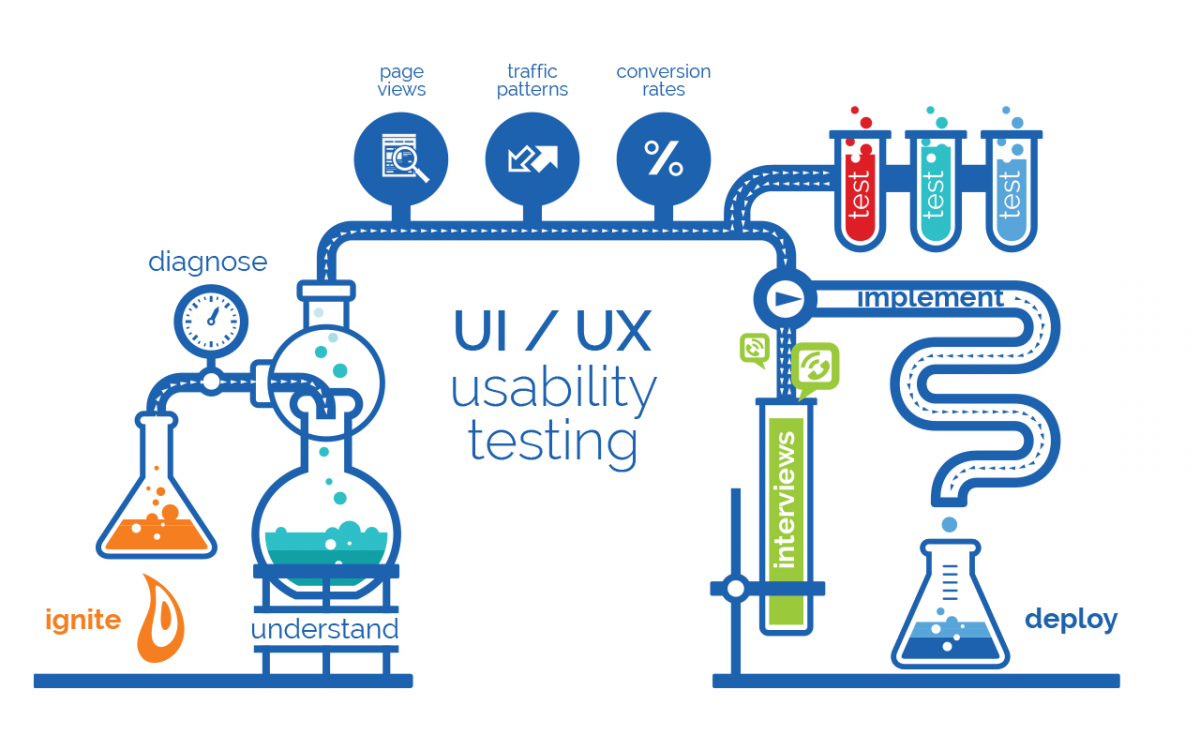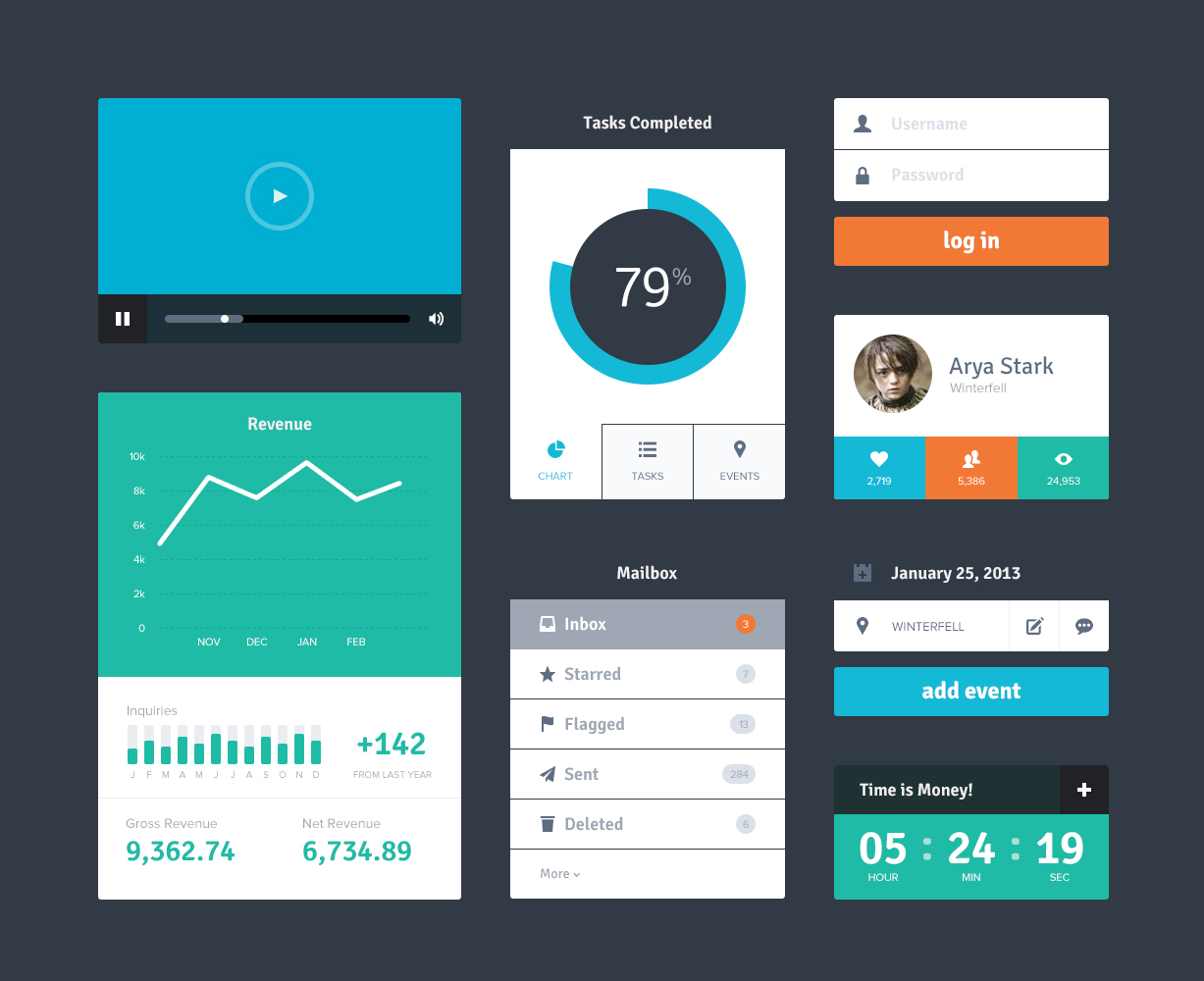#1. User Research
User research is the process of gathering information about the people who will be using a product or service in order to understand their needs, goals, and behaviors. It is a crucial step in the design and development process, as it helps to ensure that the final product will be tailored to the needs of the target audience.

User research can be conducted in a variety of ways, including interviews, surveys, user testing, and usability testing. It can be done both in-person and remotely, depending on the type of research, resources, budget and the audience.
Interviews are one-on-one conversations with users that are conducted in-person or remotely and can be used to gather qualitative data such as user's perspective and feelings about a product or service. Surveys, on the other hand, are used to gather quantitative data such as demographics and user preferences.
user research is a critical step in the design and development process that allows businesses to create products that are more tailored to the needs of the target audience. By conducting user research and incorporating the insights gained into the design and development process, businesses can create more user-friendly and effective products that are more likely to be successful in the market.
#2. Information Architecture (IA)
Information architecture (IA) is the practice of organizing, structuring, and labeling content in a way that makes it easy to find and understand. It is a critical aspect of web and product design, as it helps to ensure that users can find the information they need quickly and easily.

One of the main benefits of information architecture is that it can improve the user experience. By organizing and structuring content in a logical and consistent way, users can find what they need more quickly and easily. This can lead to higher satisfaction and engagement with the website or product.
Another advantage of information architecture is that it can improve search engine optimization (SEO). By structuring content in a way that is easy for search engines to understand, websites and products can rank higher in search engine results pages (SERPs), which can lead to more traffic and higher visibility.
In conclusion, information architecture is a critical aspect of web and product design that helps to ensure that users can find the information they need quickly and easily. By organizing, structuring, and labeling content in a logical and consistent way, businesses can improve the user experience, increase satisfaction and engagement, and improve search engine optimization. By involving users in the process, IA can ensure that the final product or website aligns with their needs, preferences and behaviors.
#3. Interaction Design
Interaction Design, often abbreviated as IxD, is the practice of designing the interactions between users and a product, service or system. It's focused on creating meaningful, user-centered experiences that are intuitive, efficient and effective.

Interaction design can be done in several ways, such as using wireframes, prototypes, and user testing. Wireframes are a visual representation of a product's layout and structure, they are used to communicate the main features and functionality to stakeholders. Prototypes are a more advanced version of wireframes and they can be interactive and allow users to test the functionality of a product or service. User testing is a method that helps to evaluate the effectiveness of an interaction design by having users perform specific tasks and observing how they interact with a product, service or system.
Interaction design can be done through a process called Human-Centered Design, which involves involving users in the design process to ensure that the final product aligns with their needs, preferences, and behaviors. This can be done through user research, surveys, interviews, and usability testing, which provides insights into user's needs and expectations.
information architecture is a critical aspect of web and product design that helps to ensure that users can find the information they need quickly and easily. By organizing, structuring, and labeling content in a logical and consistent way, businesses can improve the user experience, increase satisfaction and engagement, and improve search engine optimization. By involving users in the process, IA can ensure that the final product or website aligns with their needs, preferences and behaviors.
#4. Visual Design
Visual design is the practice of creating and arranging visual elements, such as color, shape, typography, and imagery, in order to communicate a message and achieve a specific goal. It is a crucial aspect of design in various fields, including graphic design, web design, product design, and branding.

To create an effective visual design, it's important to consider the principles of design such as balance, contrast, alignment, repetition and proximity. These principles help to create hierarchy, emphasis and a sense of unity in the design.
The process of visual design starts with research and concept development, which includes understanding the target audience, the message and the context of use. Then the designer will create visual elements such as color schemes, typography, and imagery that align with the concept and the target audience. It is important to use consistent and appropriate visual language throughout the design.
visual design is a crucial aspect of design that helps to create a memorable and impactful experience for the audience. By using visual elements in an intentional and harmonious way, businesses can create a strong visual identity and communicate their message in a clear and engaging way. By considering the principles of design, a well-thought-out visual design will help create an effective and successful communication tool.
#5. Usability Testing
Usability testing is the process of evaluating a product or service by testing it with representative users to identify any issues or problems that need to be addressed. It is an important aspect of user-centered design, as it allows designers and developers to see how users interact with the product and get feedback that can be used to improve the overall user experience.

Usability testing can be conducted in a variety of ways, such as in-person testing, remote testing, and A/B testing. In-person testing involves bringing users into a lab or other facility to test the product, while remote testing involves having users test the product from their own location. A/B testing, on the other hand, is a method of comparing two versions of a product to see which one performs better.
usability testing is an important aspect of user-centered design that allows designers and developers to identify and address usability issues early on, in the development process. By creating more user-friendly products, businesses can lead to higher satisfaction and engagement among users, and can save time and money in the long run. By conducting usability testing, designers and developers can ensure that their product is intuitive, easy to use and meets the needs of their target users.
#6. UI Patterns & Guidelines
UI patterns and guidelines are a set of established solutions and best practices for solving common user interface (UI) problems. They are used by designers and developers to create consistent, user-friendly, and efficient interfaces across different platforms and devices.

UI patterns and guidelines can be used in a variety of contexts, such as web design, mobile app design, and software design. They can include solutions for specific UI elements such as navigation, forms, and buttons, as well as general design principles such as layout, typography, and color.
UI patterns and guidelines are a set of established solutions and best practices for solving common UI problems. They are used to create consistent, user-friendly, and efficient interfaces across different platforms and devices. By providing a set of pre-established solutions, designers and developers can improve the user experience, save time and resources and create an intuitive and easy to use interface that aligns with the target audience needs.
Leave a comment